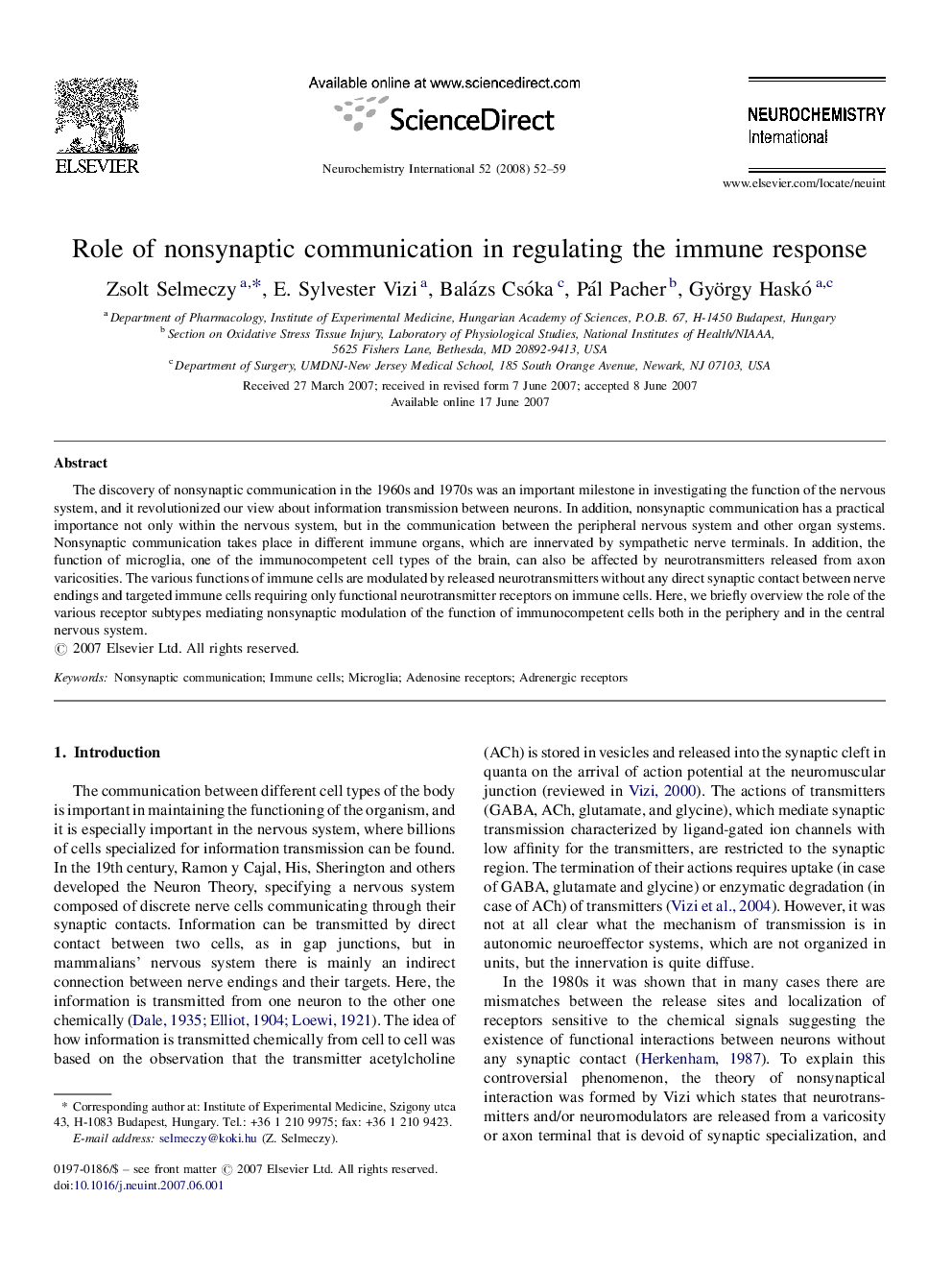| Article ID | Journal | Published Year | Pages | File Type |
|---|---|---|---|---|
| 8479374 | Neurochemistry International | 2008 | 8 Pages |
Abstract
The discovery of nonsynaptic communication in the 1960s and 1970s was an important milestone in investigating the function of the nervous system, and it revolutionized our view about information transmission between neurons. In addition, nonsynaptic communication has a practical importance not only within the nervous system, but in the communication between the peripheral nervous system and other organ systems. Nonsynaptic communication takes place in different immune organs, which are innervated by sympathetic nerve terminals. In addition, the function of microglia, one of the immunocompetent cell types of the brain, can also be affected by neurotransmitters released from axon varicosities. The various functions of immune cells are modulated by released neurotransmitters without any direct synaptic contact between nerve endings and targeted immune cells requiring only functional neurotransmitter receptors on immune cells. Here, we briefly overview the role of the various receptor subtypes mediating nonsynaptic modulation of the function of immunocompetent cells both in the periphery and in the central nervous system.
Related Topics
Life Sciences
Biochemistry, Genetics and Molecular Biology
Cell Biology
Authors
Zsolt Selmeczy, E. Sylvester Vizi, Balázs Csóka, Pál Pacher, György Haskó,
